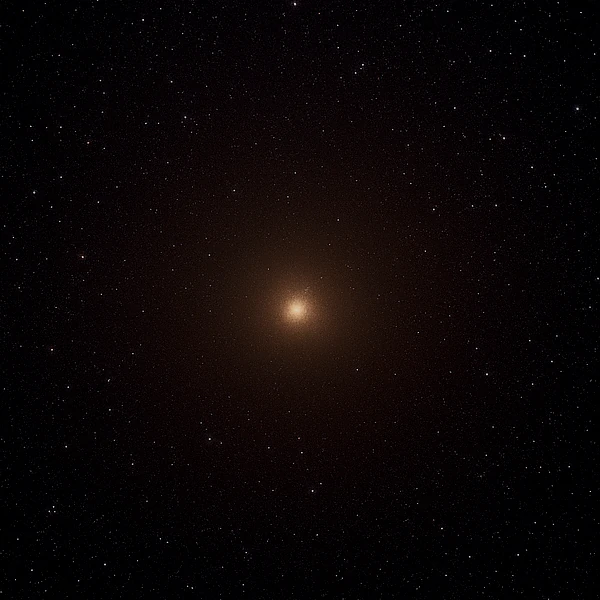
The idea of a companion star to the Sun, named Nemesis, originated from the observation of mass extinction cycles that seem to occur every 26 to 30 million years. In the 1980s, researchers David Raup (1933-2015) and Jack Sepkoski (1948-1999) highlighted these cycles based on fossil records.
To explain these periodic extinctions, astronomers Richard A. Muller (1944-), Marc Davis (1947-), and Piet Hut (1952-) proposed in 1984 the existence of a faint companion star in a highly elliptical orbit around the Sun. This star, named Nemesis, could, during each close pass, disrupt the trajectories of comets in the Oort Cloud and cause a shower of projectiles toward the inner Solar System.
N.B.:
In galactic dynamics, an isolated star can result from violent gravitational interactions within its natal cluster. About 70% of massive stars are now observed in multiple systems, suggesting that the Sun's solitude is likely a secondary situation.
Despite decades of research, no direct evidence of Nemesis's existence has been found. Modern astronomical surveys like WISE (Wide-field Infrared Survey Explorer) have mapped the sky in infrared and detected no brown dwarf or faint star at the proposed distances for Nemesis. Many astronomers consider the Nemesis hypothesis unlikely for the following reasons:
N.B.:
The Oort Cloud is a "theoretical" region located between 2,000 and 100,000 astronomical units from the Sun, containing billions of extremely small and dark cometary nuclei. Its existence is inferred from the orbits of a few long-period comets that arrive from all possible directions, forming a sphere around the Solar System.
Recent studies on stellar formation show that more than 60% of Sun-like stars are born in binary or multiple systems. The work of Steven Stahler (University of California, 2017) suggests that the Sun very likely had a twin star at its birth, separated by gravitational interactions within its original cluster.
This companion "Nemesis," if it existed, could have been ejected from the early Solar System. Indeed, stars rarely form in isolation but within dense star clusters. Close gravitational interactions between young stars in these chaotic environments are frequent and can easily separate newly formed binary pairs.
Thus, the Sun very likely had one or more companion stars in its youth, but these would have been torn away by gravitational perturbations. The hypothetical Nemesis, if it existed, would today orbit independently around the galactic center, light-years away from us, or have been captured by another stellar system. This possibility makes it even more difficult to search for such an object today.